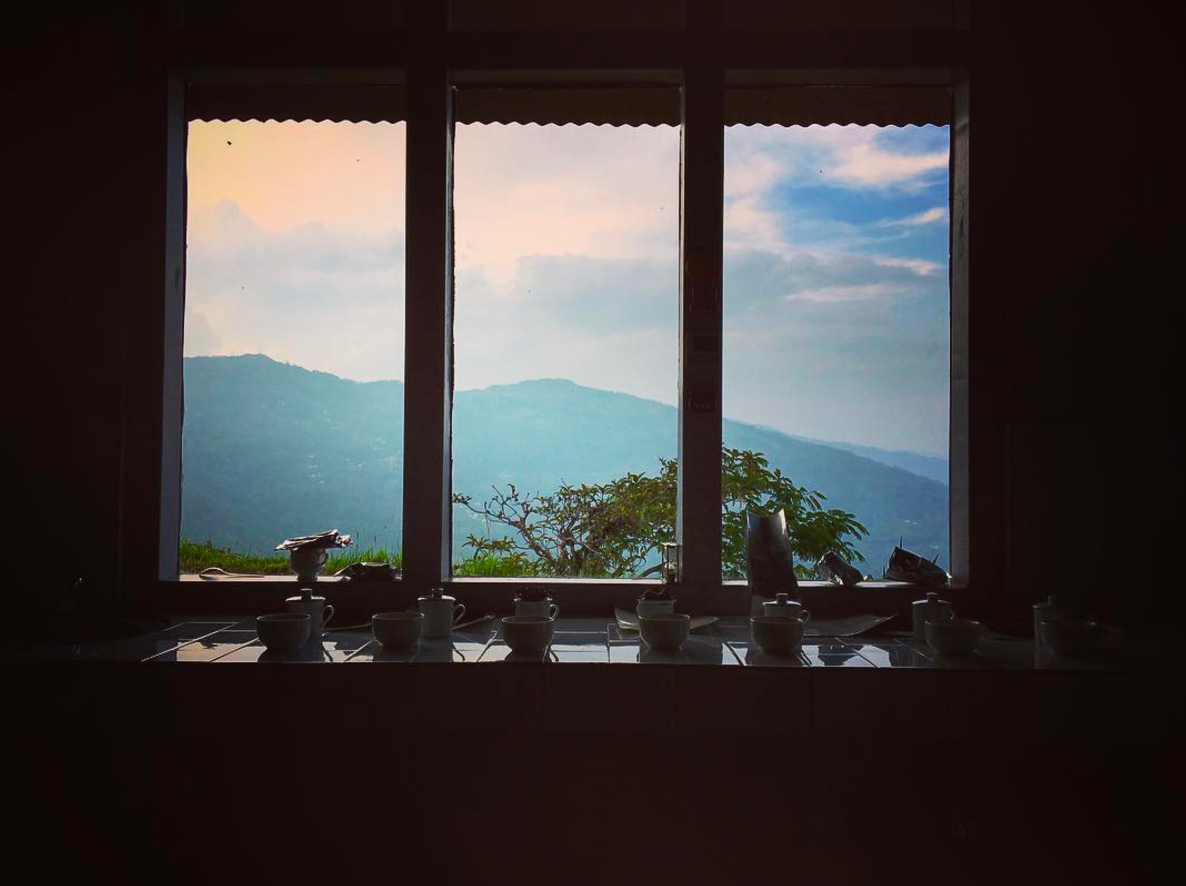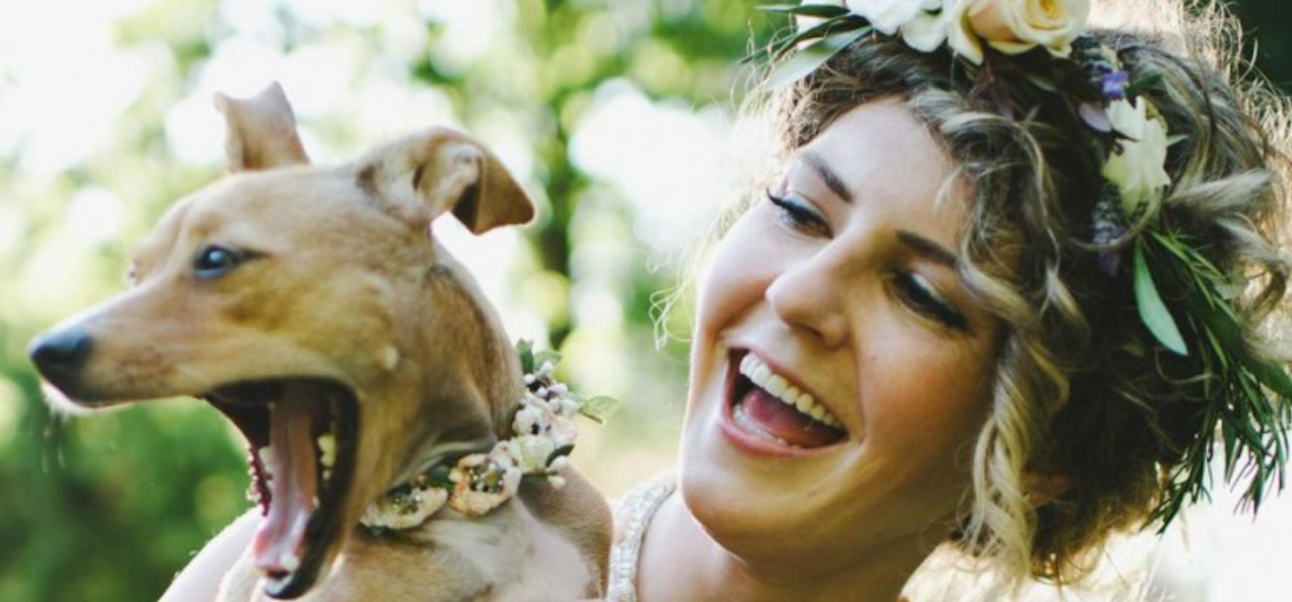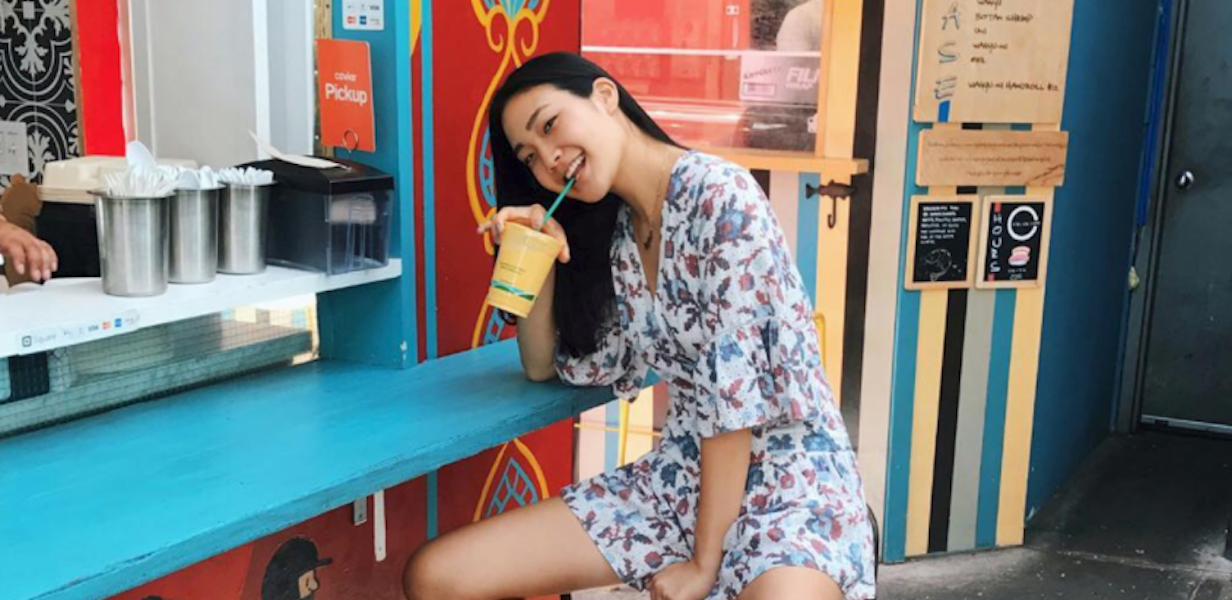I’m not entirely sure what I expected on my sourcing trip to Nepal. Prior to this trip my exposure to Nepalese teas was limited. After a mild encounter with the Indian Border Patrol (Note to self, keep your visa printout until you leave the country), Robert & I drove three hours in the blazing heat along the base of the Nepalese Himalayan foothills.
Turning north into the mountains, our clunky SUV climbed and descended 3 times over 5 hours, hugging switchbacks and finding a spot of chai along the way before reaching our destination, just short of a town called Hile. Dusk and thunderous rain clouds enveloped the surrounding mountains, but still I could tell that the terroir was lusher than I had previously imagined.

We were greeted by Morris, a charming man with round glasses who brims with energy, excitement and his passion for creating quality tea. Morris has worked in tea for 25 years and at the Jun Chiyabari estate for nearly 10 years. Morris has one of those personalities that is warm and open, which can be a rarity even in the tea industry. A gracious host, he welcomed Robert & I into his charming bungalow and shared a wealth of knowledge, not only of tea, but of Nepal and it’s history and culture. A multifaceted man, Morris was also a fantastic chef and had a sensational garden, exposing us to tasty delicacies and intensely hot peppers.
Upon rising the next day, Morris walked us over to the factory where production was well underway. One of the most memorable aspects of these trips are the aromas wafting from an active tea factory. The withering leaves are bright and fresh, whereas the ovens emit warm, dark and toasty flavors that wrap around you. As we arrived to the cupping room, we passed workers that were hand sorting the tea after finishing (an infrequent occurrence in today’s tea production) to remove imperfections or twigs that may have made it past the sieves of the machines.

Jun Chiyabari produce a wide variety of teas, everything from light and delicate white teas to sweet cocoa-y black teas and everything imaginable in between. We commenced our tastings with white teas, and while initially I was reminded of Chinese Mutan White teas, there appeared something more tangible in the flavors. The body and sweetness carried through more clearly in a way you don’t often see in white teas. The Himalayan White tea we purchased is a combination of long, downy silver tips and large leaves. This tea is handpicked, withered for over a day and a half with forced air assistance, dried and hand sorted, this white tea is in a league of its own.
Being that our visit fell during the end of May, we were unable to see teas that are generally produced in the late spring early summer however Morris presented some 2016 production teas for our consideration until the 2017 crop was made. As previously mentioned, my exposure to Nepalese teas was limited, but one that we had carried some time ago was called Himalayan Orange. Orange here refers to the size of the leaf as well as the color of the liquor. It’s produced year round but I always enjoy it most from the early summer months. I’d always had a fondness for the Himalayan Orange we used to carry since it provided the fruity aromas of a second flush Darjeeling with a much softer and nuanced body. Jun Chiyabari’s 2016 Himalayan Orange did not disappoint, and we eagerly awaited for the 2017 offer sample, which we immediately purchased the entire lot of!

Morris and his team showed us true hospitality that we won’t soon forget. I believe this trip served as a foundation of a long-lasting relationship with a producer whose quality standards meet our own. We look forward to sharing more of their tea with you.
















2 comments
Rose Heyward
Thank you for sharing a page from your travel journey! What lovely pictures.
Thank you for sharing a page from your travel journey! What lovely pictures.
Betty Jo Boram
The place and the tea sound mesmerizing. I would like a cup of the white right now.
The place and the tea sound mesmerizing. I would like a cup of the white right now.